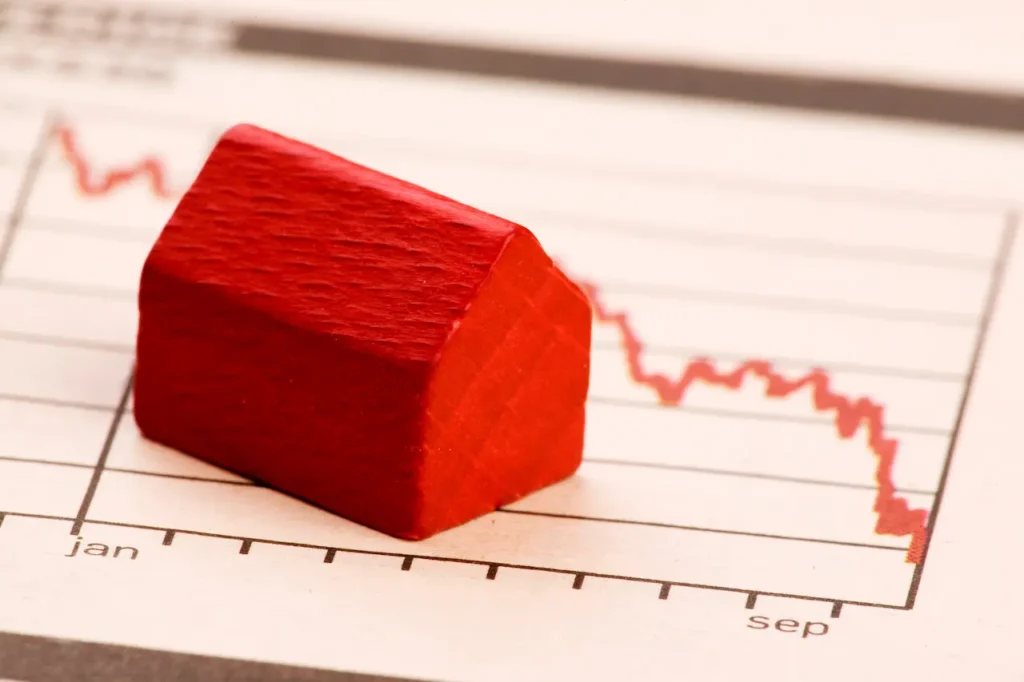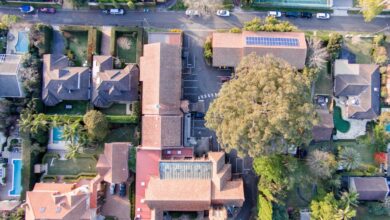Are the Sydney house prices falling after such a big run? After years of skyrocketing growth, the momentum in Australia’s property market is beginning to taper off, according to CoreLogic’s recent Home Value Index. Only half of Australia’s capital cities – including Sydney, Brisbane, Adelaide, and Perth – recorded growth during the September quarter. Meanwhile, other cities saw declines, reflecting a broader cooling across the market.
Table of Contents
Toggle1. Buyer Relief: Are Sydney House Prices Finally Falling?
After years of relentless growth, the Sydney property market is showing signs of cooling, marking a potential shift towards stability. CoreLogic’s Home Value Index reveals that the September quarter saw median house prices in Sydney increase by only 0.5%, the lowest growth rate recorded since February 2023.
Communities Plus has been actively traveling across Australia to investigate and gather firsthand data on these market developments. Our team’s insights confirm that buyer momentum is slowing in Sydney. While Adelaide and Perth are still showing some growth, it’s evident that affordability pressures are biting harder across the nation, including Sydney.
Economic factors such as higher interest rates, lower population growth, and increased housing stock are influencing this slowdown. Tim Lawless, CoreLogic’s research director, notes:
“We’ve reached a point where affordability pressures are starting to impact buyer behavior, and we anticipate that this downward trend will persist.”
Homebuyers now face a rare opportunity. Communities Plus sees this cooling phase as a “window of opportunity” for buyers to secure properties before the market potentially rebounds once interest rates drop.
2. Sydney Property Market Forecast for 2025: Where Are We Heading?
Despite the cooling trend, forecasts for 2025 are optimistic. ANZ Bank projects Sydney property prices will increase by around 5%, largely due to continued population growth and limited housing supply. Communities Plus emphasises that strategic investors are already returning to the market, capitalising on favourable conditions while anticipating future gains.
Here’s what the latest CoreLogic data shows for median property prices in Sydney:
| Property Type | Median Price | Quarterly Change | Annual Change |
|---|---|---|---|
| Capital City Dwellings | $1,188,912 | +0.5% | +4.5% |
| Capital City Houses | $1,473,775 | +0.3% | +4.9% |
| Capital City Units | $860,849 | +0.9% | +3.5% |
| Regional Dwellings | $740,981 | +0.4% | +3.6% |
A shortage of new dwelling approvals, which fell by 19% in June 2024, is intensifying Sydney’s housing supply crisis. This issue is compounded by anti-landlord policies and taxation burdens that discourage investment. Communities Plus highlights that fewer new homes mean rising competition for existing properties, driving up both prices and rents.
3. Sydney’s Rental Market: A Crisis in the Making
Sydney’s rental market is under enormous pressure, with vacancy rates at historic lows of around 1.7%. A healthy rental market typically has a vacancy rate of 2-2.5%, indicating Sydney’s market is well below equilibrium. Communities Plus’ research reveals that intense demand, combined with a supply shortfall, is driving rents higher.
The reopening of international borders in 2022, alongside an influx of skilled migrants and international students, has placed additional stress on Sydney’s already tight rental market. Communities Plus predicts that this demand will remain elevated as Sydney’s population grows by another million people over the next decade.
The current lack of new development approvals and anti-investor policies mean landlords are selling off properties. This further limits the rental supply, creating a “pressure cooker” environment for renters. As demand outstrips supply, rental prices are expected to climb even higher, affecting both residents and investors.

4. Market Fragmentation: What Areas Are Performing Best?
Communities Plus identifies that Sydney’s property market is increasingly fragmented. Premium properties in affluent suburbs like Randwick, Bondi, and Mona Vale are holding value, while middle-ring areas such as Marrickville and Rouse Hill are showing signs of growth due to gentrification.
On the other hand, high-density apartment markets are struggling. Data from PropTrack shows significant price declines in areas with surplus apartment stock, such as Parramatta and the Central Coast. Some coastal suburbs, including Manly and Bondi, have seen median house prices fall by as much as $250,000.
For investors, Communities Plus advises focusing on A-grade properties in lifestyle-rich suburbs, which tend to perform better in volatile markets. Properties in well-connected areas with multiple income streams (beyond wages) offer a safer investment opportunity.
5. Sydney’s Housing Supply Challenge: A Perfect Storm
Communities Plus warns that Sydney’s housing supply crisis shows no signs of easing. Government reforms have been insufficient to address the shortfall in new housing developments. The 19% drop in private house approvals in June 2024 underscores the urgency of the situation.
Tim McKibbin, CEO of REINSW, highlights how taxation burdens, approval delays, and rental reforms have discouraged investors and developers. Communities Plus supports calls for streamlined development approvals and reduced property taxes to stimulate housing construction. Without these changes, Sydney’s housing crisis will continue to deteriorate.
6. Investment Opportunities in 2025: Where to Look
Despite challenges, Sydney remains a hotbed for strategic property investments. Communities Plus identifies several investment trends for 2025:
- Family Homes in Premium Suburbs: Demand for space is driving families toward established neighborhoods with good schools and lifestyle amenities, such as Coogee, Willoughby, and Dee Why.
- Townhouses in Gentrifying Middle-Ring Suburbs: Townhouses offer a balance between affordability and lifestyle, making them popular in areas like Hurstville and Marrickville.
- Boutique Apartments in Lifestyle Hubs: Investors are moving away from high-density developments and opting for low-rise boutique apartments in vibrant areas like Surry Hills and Bondi.
Communities Plus emphasizes the importance of investing in locations benefiting from infrastructure projects and gentrification. Areas with strong population growth will likely see rising property values, providing excellent opportunities for long-term capital growth.

7. Market Outlook: A Buyer’s Market Today, But for How Long?
Experts agree that Sydney’s current market conditions favor buyers, but this window of opportunity may not last. With interest rates expected to fall in 2025, buyer confidence is likely to surge, leading to increased competition and price growth. Communities Plus advises acting swiftly to take advantage of current market conditions.
“We are seeing buyers with bigger budgets waiting for rate cuts, which will inevitably drive prices back up,” says PropTrack economist Anne Flaherty.
Communities Plus’ analysis confirms that the flight to quality will persist, with high-end properties in affluent suburbs likely to outperform. Investors who enter the market now, focusing on A-grade properties, will benefit from rising demand as interest rates fall and the economy recovers.
8. Conclusion: Navigating the Changing Sydney Market
The Sydney property market is entering a transitional phase, offering both challenges and opportunities. Communities Plus encourages buyers and investors to remain proactive, using this period to secure valuable properties before the market rebounds.
Our team continues to travel across Australia, analyzing data and trends to provide actionable insights for our clients. Sydney’s market fragmentation means that not all properties are equal, and careful planning is essential.
With limited supply, rising population growth, and expected rate cuts, Sydney’s housing market is poised for renewed growth in the medium to long term. Whether you are a homebuyer or investor, Communities Plus is here to guide you through these dynamic times, helping you make strategic property decisions for future success.

